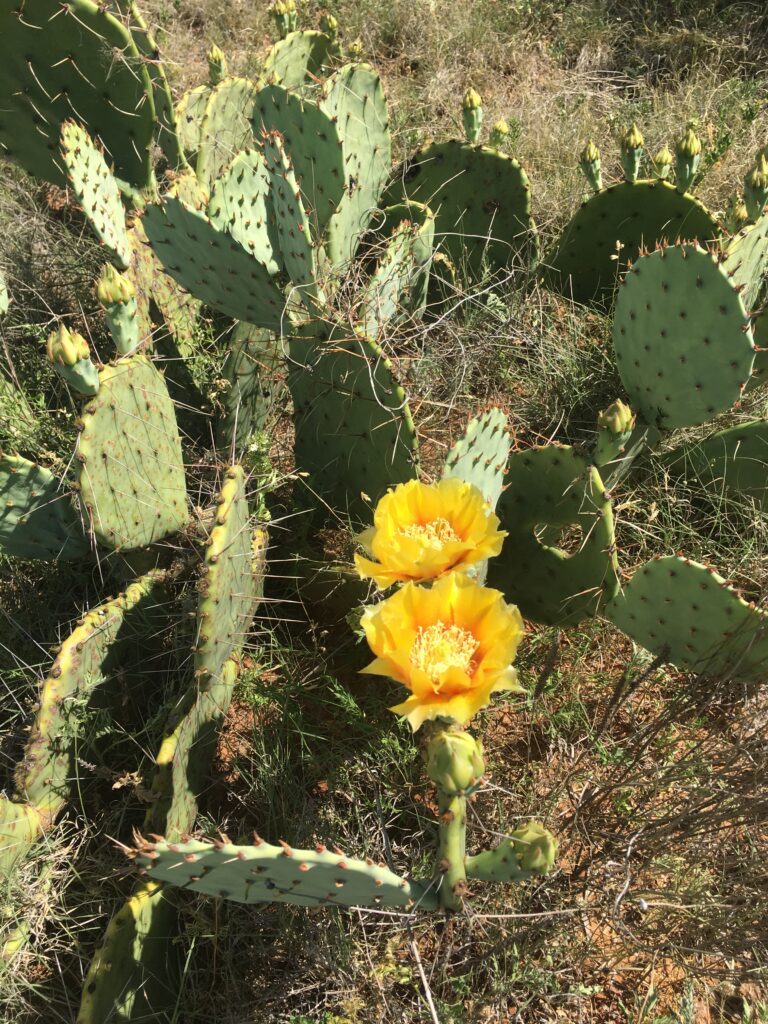The Power of Prickly Pear

How Prickly Pear Came to Be
Once I made the decision to start my own practice, I knew I needed to come up with a name that was meaningful, unique, and a little bit fun. Kyle (my fiancé) and I were walking from our house to the New Braunfels farmers market one summer Saturday morning. On our walks, we like to dream big and talk about our goals. That morning, we were talking about my vision for the practice, including possible names. Kyle asked “what is your favorite plant?” I answered immediately “cactus!” Kyle paused for a few seconds. “How about…Prickly Pear Pediatrics?” We instantly knew it was perfect. The more we thought about it, the more it fit! Here’s why:
1. The State Plant of Texas
The prickly pear cactus was named the state plant of Texas in 1995 by the state legislature:
“WHEREAS, Rugged, versatile, and uniquely beautiful, the prickly pear cactus has made numerous contributions to the landscape, cuisine, and character of the Lone Star State, and thus it is singularly qualified to represent the indomitable and proud Texas spirit as an official state symbol; now, therefore, be it RESOLVED, That the 74th Legislature of the State of Texas hereby designate the prickly pear cactus as the official state plant of Texas.”
2. A Symbol of Resilience and Healing
The prickly pear cactus can thrive in harsh conditions. It is an adaptable plant that can be found from the Southwestern US states all the way up to Canada (and even in the Caribbean islands). The plant helps to sustain the animals such as coyotes, javelinas, jackrabbits, desert tortoise, mule deer, bats, birds, and many others. There are times when I feel that the U.S healthcare system is a broken, harsh environment for both doctors and patients, so the prickly pear cactus is an inspiration for me to adapt and find a way to thrive despite the tough conditions. It is said that the Aztecs believed that the bright red prickly pear fruit was symbolic of the human heart. They used juice from the paddles to treat burns and other wounds. They also believed that eating the fruit of the cactus helped to treat hepatitis.
3. Superfood
The prickly pear plant actually has lots of health benefits. The colorful fruits contain high amounts of antioxidant pigments (betacyanins). It can be eaten raw (once the spines are removed) but can also be used to make syrup, jelly, wine, etc. The paddles also contain a variety of nutrients including fiber, protein, Vitamin A, Vitamin C, Calcium, Magnesium, and Potassium. In Mexican culture, the paddles (nopales) are used in a variety of tasty dishes. Likely because of the combination of antioxidants, vitamins, and minerals found in the plant, consumption of the prickly pear plant is felt to decrease chances of developing type 2 diabetes by regulating blood sugar spikes, maintain healthy cholesterol levels, and decrease inflammation in the body.
4. Back to My Roots
Growing up “out in the country” of central Texas, my Dad and I would go on walks where he would point out various trees and plants. The prickly pear cactus was scattered all throughout the land. Dad would tell me stories about how his own father picked the prickly pear fruits from the cactus, cleaned them, and made them into prickly pear wine and jelly. We would admire the bright yellow and orange blooms of the cactus flowers. Mom especially loved the yellow ones since that is her favorite color. Although I was taught to give the cactus a wide berth, there were inevitably times when after running around in the woods, I had lots of the tiny, nearly invisible, cactus spines lodged into my ankles and my parents taught me how to gently use tweezers to remove them. Seeing the cactus make me feel nostalgic for my childhood and grateful for the way I grew up. I guess maybe that’s why it is my favorite plant!
